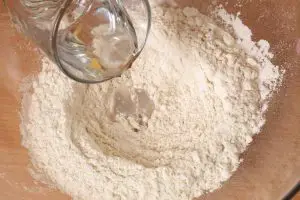Flour, wheat, salt, and eggs are just some of the common ingredients used when making bread dough. But what many people don’t know is that bread dough also needs to have some kind of fat in it to create the soft texture you want. However, how much you add and what type of fat you use all depend on the bread you are making. If you are curious about the different types of fat used in breads and how to use them, keep reading.
Benefits of Adding Fat to Bread Dough
As mentioned previously, adding fat to your bread dough helps create a softer texture in your bread, as well as a softer outer crust. This is because the fat coats the gluten strands and makes the finished product more tender. Breads with fat in them will also not dry out as quickly as those without. Fat also adds an extra bit of flavor to your dough and even helps it to stay fresh for longer.
All in all, if you want to end up with a soft bread dough, especially if you are making hamburger buns or another type of bread you need to slice, be sure to add fat to your dough.
What Type of Fat Should You Add to Bread Dough?
The type of fat that you add to your bread dough all depends on the type of bread that you are making. For a standard white loaf, you can use softened butter – which adds a creamy texture to your bread – olive oil, or lard. If you are making pizza dough, ciabatta, or focaccia, be sure to use olive oil.
Many people also choose to add milk to their bread dough because milk contains a certain amount of fat in it. You can use milk to replace all or just some of the water content of the bread, which will make your bread much softer.
When it comes to the type of butter that you use, you will want to use unsalted butter as opposed to salted butter. If you have to use salted butter, be sure to use less salt in your dough mixture so your bread doesn’t come out too salty.
How Much Fat Do I Add to Bread Dough?
The amount of fat that you add to your bread dough also depends on the type of bread you are making. However, a bread recipe that uses 500 grams of flour would need 30 to 40 grams of fat to create a soft texture. If you want a crispy texture as opposed to a softer one, you can use a little less fat in the dough.
The process of adding your fat is also something to take into careful consideration. When adding your fat, be sure to add it prior to mixing and kneading the dough. If you are using butter as your fat, be sure that it has been softened prior to adding it into the mixture.
When you add your fat will determine the outcome of your bread. If you add fat at the beginning of the process, before the dough has been kneaded, the texture of your bread will be more cake-like. If the gluten is allowed to develop before you add your butter, the texture will be more bread-like.
When Not to Add Fat to Bread Dough
There are a variety of reasons why you wouldn’t want to add fat to your dough, but it all boils down to personal preference, and whether or not you have a particular allergy to any of the fats. Those who are trying to make a bread with less calories would likely benefit from not putting oil in their bread. People with a milk allergy should also steer clear of adding fat to their bread dough.
Don’t worry about your bread not tasting the same if you forget to add the fat into it or you choose not to. Without fat, your dough will still rise, but it will just have a crispier crust than if you were to have added fat into the dough.
Does Fat Help Bread Rise?
Fat doesn’t necessarily help bread rise. On the contrary, a loaf of bread with a lot of fat in it will actually take longer to rise. However, it will increase the volume of the bread instead.
Conclusion
If this is your very first time making bread, you may be feeling a bit overwhelmed about all the steps that come with making bread. However, adding fat to your bread dough is a surefire way to end up with soft and delicious bread that is sure to be a crowd pleaser. So much so, in fact, that people will be begging you for your secret ingredient! (Hint, it’s fat!)






